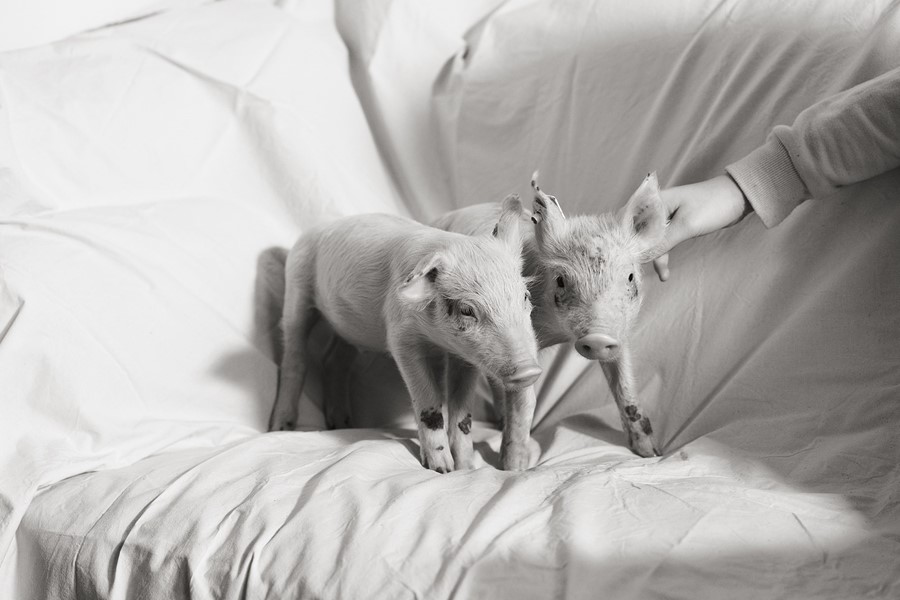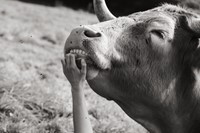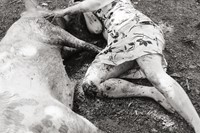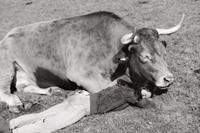Published by Loose Joints, Yana Wernicke’s Companions imagines a “magical utopia where humans and animals could live side by side, based on mutual respect”
In John Berger’s landmark essay Why Look at Animals?, the legendary art critic unpacks how “the culture of capitalism”, which values and treats animals in relation to their ‘usefulness’, has almost totally eroded the previously sacred bond between humans and animals. “In the last two centuries, animals have gradually disappeared,” he surmised. “Today, we live without them.”
Sadly, for the most part, this is true (owning a pet or visiting a zoo, in Berger’s view, is a pale imitation of the genuine companionship we once shared with animalkind). But in 2020, photographer Yana Wernicke set out to capture instances where people do manage to live in harmony with animals and cultivate meaningful, caring relationships with them. She visited sanctuaries across Germany, photographing animals and their guardians, until she encountered Julie and Rosina – two young women who were independently looking after rescued animals. “The friendships they had with their animals was unlike anything I had experienced in any of the sanctuaries, where there were usually more people involved,” Wernicke recalls.
The result of the time Wernicke spent photographing Julie and Rosina is Companions. The book captures the precious, intimate bond between the two young women and the animals they care for. While borne out of Wernicke’s pessimism about humankind’s treatment of animals, it offers a radical, hopeful vision of a “magical utopia” where humans and animals can co-exist as equals.
We spoke to Wernicke about the meat paradox, species loneliness, and how to foster hope for a better future for all species.
Serena Smith: Could you tell me a bit about Rosina and Julie, the two young women in the pictures?
Yana Wernicke: I wanted to do a project on human-animal relationships and the idea of caring for animals for quite a while, so I started visiting a lot of sanctuaries all over Germany, and started photographing the animals and the people caring for them. This is how I met Julie in 2020. She was 19 years old at the time. She wasn’t actually working at a sanctuary, but she had already rescued over ten cows and was taking care of them all and financing everything all by herself. She had no outside help, no rich family or anything.
She suggested to me that I meet Rosina, who she’d never met before but had connected with through social media. So I started photographing Rosina too, and I realised in that process that I wanted to focus only on the two of them because of this special role that they had in taking on this huge responsibility for these animals.
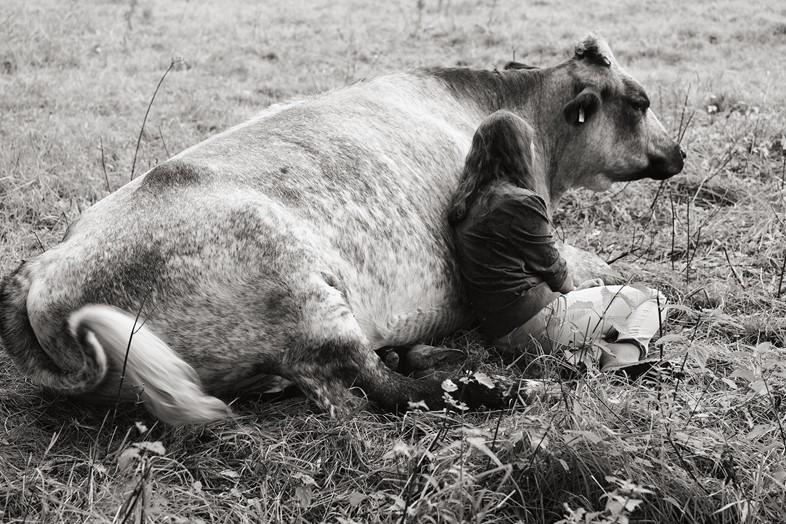
SS: When people think of animals that are traditionally regarded as ‘companions’, they might think of domesticated animals – dogs, cats. But Companions features farm animals which, sadly, are often killed or exploited in some way – cows, ducks, pigs. Why was it important to you to depict these animals as companions?
Yana Wernicke: Personally, I’ve always had a hard time distinguishing between the animals that we love and care for, and the animals that get consumed. It’s something that’s always in my mind, this weird distinction we make. You’ve probably also heard of ‘the meat paradox’, of how we feel disgusted at the thought of eating cats or dogs, but eat pigs and cows and chickens. That’s one of the reasons why I really wanted to make this work, to show these traditional livestock animals in the role of a companion. I wanted to show that really there’s not a big distinction between, for example, a pig playing and my dog playing.
SS: Some of my favourite photos in Companions are the ones where you capture Rosina and Julie stroking, cuddling, or hugging animals. Was it a conscious decision to highlight the importance of physical touch in companionship with animals?
YW: Yeah, definitely. I think touch is such a primary way of communicating with animals. Of course, we use language, sound, body language … but I think touch is something very ‘human’, and it does play a huge role in our communication with animals. By capturing these images of touch between humans and animals, and also these close-ups of the fur and of the animal bodies. I really wanted a viewer to be able to be more ‘in touch’ also with the pictures and what it might feel like to touch the animals themselves. Touch is [primarily] something that happens with the hands, but I also really like the idea of bodies leaning into each other and really enjoying each other’s warmth and company. I think that’s how animals ‘touch back’ a lot, like when they lean on a human or other animals.
I also think it’s important to say that even though they both do touch a lot of their animals, they also recognise that some of the animals might have had bad experiences with human touch, so they also really respect how the animal reacts to the touch.
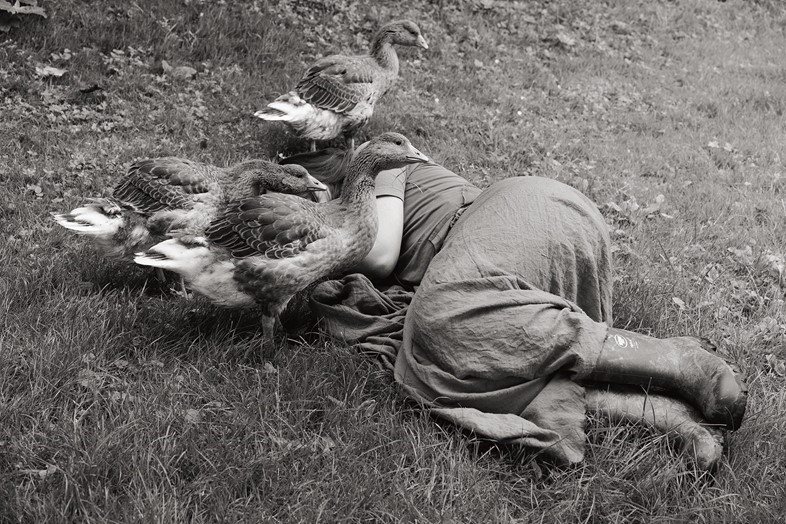
SS: Beyond Companions, much of your other work also focuses on the relationship between humans and the natural world. Why does this interest you?
YW: For me, the whole idea of ‘species loneliness’ plays a huge role in every context. It’s this idea that humans have, over time, kind of disconnected from the natural world and animals have disappeared from our reality. I am very interested in the idea of reconnecting with nature and animals and [exploring] how this takes place. It’s also a personal work, because Julia and Rosina live a reality that I long for as well. And I think many people do, when you see these kinds of connections building with animals that are not normally considered as ‘companion’ animals, and being more connected to nature.
SS: You say that you have been ‘feeling pessimistic about the treatment of animals’ recently. Could you expand on this?
YW: It’s not even a recent thing. I’ve been a vegetarian since I was 15 years old; I’ve always felt like there’s something wrong [in our treatment of animals]. For me, it’s always felt wrong to eat animals and I’ve been vegan for many, many years now. I think a lot of people, when they turn vegan, they get this really pessimistic outlook because you start seeing everyone as still doing all this harm. I did feel that way too, but I wanted to overcome it with my photography and try to have a more positive outlook on things – like almost trying to feel more inspired about what can be done and not focusing on all the bad things happening.
I wanted to spend time thinking of an ideal situation, focusing on what can be done and improved, and also imagining this kind of magical utopia where humans and animals could live side by side, based on mutual respect.
Companions by Yana Wernicke is published by Loose Joints, and is out now.
